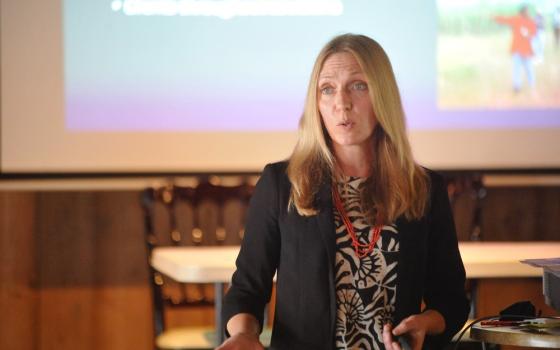While the civil rights movement was stirring debates and making headlines in Alabama in the mid-1960s, a different kind of movement, no less subversive, was underway in a small, under-funded, segregated, Catholic high school in the city of Mobile. At Most Pure Heart of Mary in the city’s old Negro ghetto, a band of Dominican sisters from Wisconsin was preparing students to go out into a frightening world that was about to change, and these students were expected to excel.
In the new book, From the Back of the Pews to the Head of the Class, the long time NCR contributor, Robert McClory, has edited and compiled interviews of several dozen graduates from this school, now in their 60s and 70s. Also interviewed were some faculty and others involved in the school. The result is a kind of oral history of what it was like to be in that special place at that time.
It was like “Hogwarts,” the school for wizards in the Harry Potter series, said one of the former students. They didn’t know the advanced math, history and language classes were going to be so challenging. “But sister kept saying we could do it,” said the student, “and we did.” The sisters, from their Dominican headquarters in Sinsinsawa, Wis., and a few lay teachers told the students what seemed at first an impossibility: They were going to go to college and they would be prepared when they went. And whatever benefits they gained from good educations, they were reminded, it would be their responsibility to give back.
Ironically, Mobile experienced no civil rights activity throughout most of the ‘60s, since black and white community leaders had agreed to stay clear of the troubles erupting in Birmingham and Montgomery, less than 200 miles away; as a result, the HOM students at first were hardly aware that a revolution that occurring, so involved they were in Latin and French (yes, French) classes, in advanced algebra and biology, in the intrigues of “Pride and Prejudice” and “Jane Eyre.” Meanwhile, the staff was researching ways to get the students into universities in the South and in the North.
When civil rights action did come to Mobile in 1969, the sisters at Heart of Mary had a major role in aiding and abetting the movement, and the students did get involved, but that was the year many of the graduates were off to college; ironically, it was also the year Heart of Mary High School closed in the interest of supporting racial integration.
In pithy summaries of their higher education and their careers, From the Back of the Pews records what these blacks have achieved in the years since graduation. And that is a significant feature of the book. They didn’t just say they had an extraordinary education; their lives show how it paid off. They became sociologists, teachers, principals, university professors, doctors, lawyers, healthcare specialists, business executives, business owners and governmental officials. The first black secretary of labor was a graduate of HOM; so were the co-founders of the Women’s Employment Division of New York City’s major job training and placement organization for minorities. It is no coincidence that so many of these former students became in their occupations mentors and coaches for younger generations. In the interviews they recall that “sister said” that was their obligation.
The book is basically the brainchild of two Dominicans who taught at HOM in the ‘60s: Sister Patricia Caraher and Sister Marilyn Aiello, along with HOM alums Alexis Herman and Paulette Norvel Lewis. They were convinced the HOM story needed to be told, especially at a time when Americans are remembering the men and women who fought at great personal cost for equal rights.
Fox is NCR publsher and is on Twitter at NCRTomFox.



